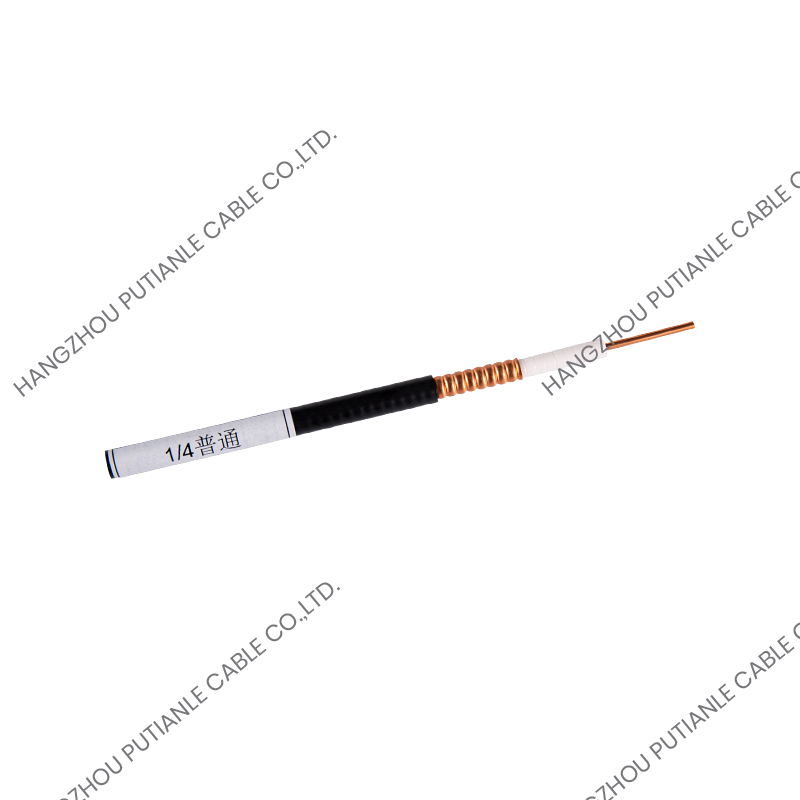As a classic signal transmission medium, coaxial cable has been an important part of the communication, broadcasting and network fields since its introduction in the early 20th century. Although the rise of fiber optic technology in recent years has had a certain impact on the application scope of coaxial cable, it still occupies an important position in fields such as home entertainment, radio and television, security monitoring and industrial control.
The shielding layer of coaxial cable can effectively block external electromagnetic interference while preventing internal signal leakage. This makes it very suitable for use in complex electromagnetic environments, such as urban areas or industrial sites.
High bandwidth support
Coaxial cable can support a wide frequency range and is suitable for a variety of signal types, including analog and digital signals. This makes it an ideal choice for broadband Internet access and high-definition TV signal transmission.
Long-distance transmission
Compared with ordinary wires, coaxial cable has a lower signal attenuation rate and can maintain high signal quality over a longer distance. This is especially important for application scenarios that require long-distance transmission.

Easy installation
Coaxial cable is flexible, easy to bend and lay, and suitable for installation needs in various indoor and outdoor environments. In addition, its interfaces are highly standardized (such as F-type connectors and BNC connectors), which facilitates connection and maintenance.
Economical
Although the performance of optical fiber technology is superior, coaxial cable is relatively low in cost and does not require expensive equipment support, so it is still a more cost-effective choice in many application scenarios.
Structure and working principle of coaxial cable
The basic structure of coaxial cable includes the following parts:
Center conductor
The center conductor is the core part of signal transmission, usually made of copper or silver-plated copper, responsible for carrying high-frequency electrical signals.
Insulation layer
The insulation layer is located outside the center conductor and is made of materials such as polyethylene or polytetrafluoroethylene. It is used to isolate the center conductor from the external shielding layer while maintaining stable electrical properties.
Shielding layer
The shielding layer is composed of a metal braid or aluminum foil to block external electromagnetic interference and prevent signal leakage, ensuring the stability of signal transmission.
Outer sheath
The outer sheath is the outermost protective layer, usually made of PVC or PE materials with good weather resistance, which can resist physical damage and environmental corrosion.
The working principle of coaxial cable is based on the propagation characteristics of electromagnetic waves. When high-frequency signals are transmitted through the center conductor, the shielding layer forms a closed electromagnetic field, which confines the signal inside the cable, thereby avoiding signal loss and external interference.
Application fields of coaxial cable
Broadcasting and television
Coaxial cable was first widely used in cable television (CATV) systems to transmit television signals. Even today when optical fiber is popular, many families still receive TV programs through coaxial cable.
Broadband Internet
In early broadband access technology, coaxial cable was used in DOCSIS (Data over Cable Service Interface Specification) networks to provide users with high-speed Internet services. Although optical fiber has gradually replaced some coaxial cable applications, coaxial cable is still the mainstream access method in some areas.
Security monitoring
In video surveillance systems, coaxial cable is often used to connect cameras and recording equipment to transmit high-definition video signals. Its anti-interference ability and long-distance transmission performance make it an ideal choice in the security field.
Industrial control
In the field of industrial automation, coaxial cable is used for signal transmission between sensors, controllers and actuators. Its stability and reliability can meet the needs of complex industrial environments.
Radio communication
Coaxial cables are also widely used in radio transmission and reception equipment to connect antennas and transceivers to ensure efficient transmission of high-frequency signals.
Future development trends of coaxial cables
Although optical fiber technology is gradually replacing some applications of coaxial cables, the latter will still play an important role in many fields due to its unique advantages. The following are possible future development trends of coaxial cables:
Performance optimization
The application of new materials and technologies will further improve the bandwidth and transmission efficiency of coaxial cables, enabling them to adapt to higher frequency signal requirements.
Hybrid network architecture
In future communication networks, coaxial cables may be combined with optical fiber technology to form hybrid network architectures (such as HFC, fiber-coaxial hybrid networks) to balance cost and performance.
Intelligent management
With the development of Internet of Things (IoT) technology, coaxial cables may integrate more intelligent functions, such as real-time monitoring of signal quality and automatic fault diagnosis.
Environmentally friendly design
The research and development of environmentally friendly coaxial cables will become a trend, such as the use of recyclable materials and low-energy production processes to reduce the impact on the environment.
With its excellent performance and wide applicability, coaxial cables have become an important part of modern communications and signal transmission. From home entertainment to industrial control, from radio and television to security monitoring, coaxial cables have demonstrated irreplaceable value in various fields. In the future, with the continuous advancement of technology, coaxial cables will continue to evolve and provide more reliable support for the information development of human society.


 中文简体
中文简体 English
English Español
Español














